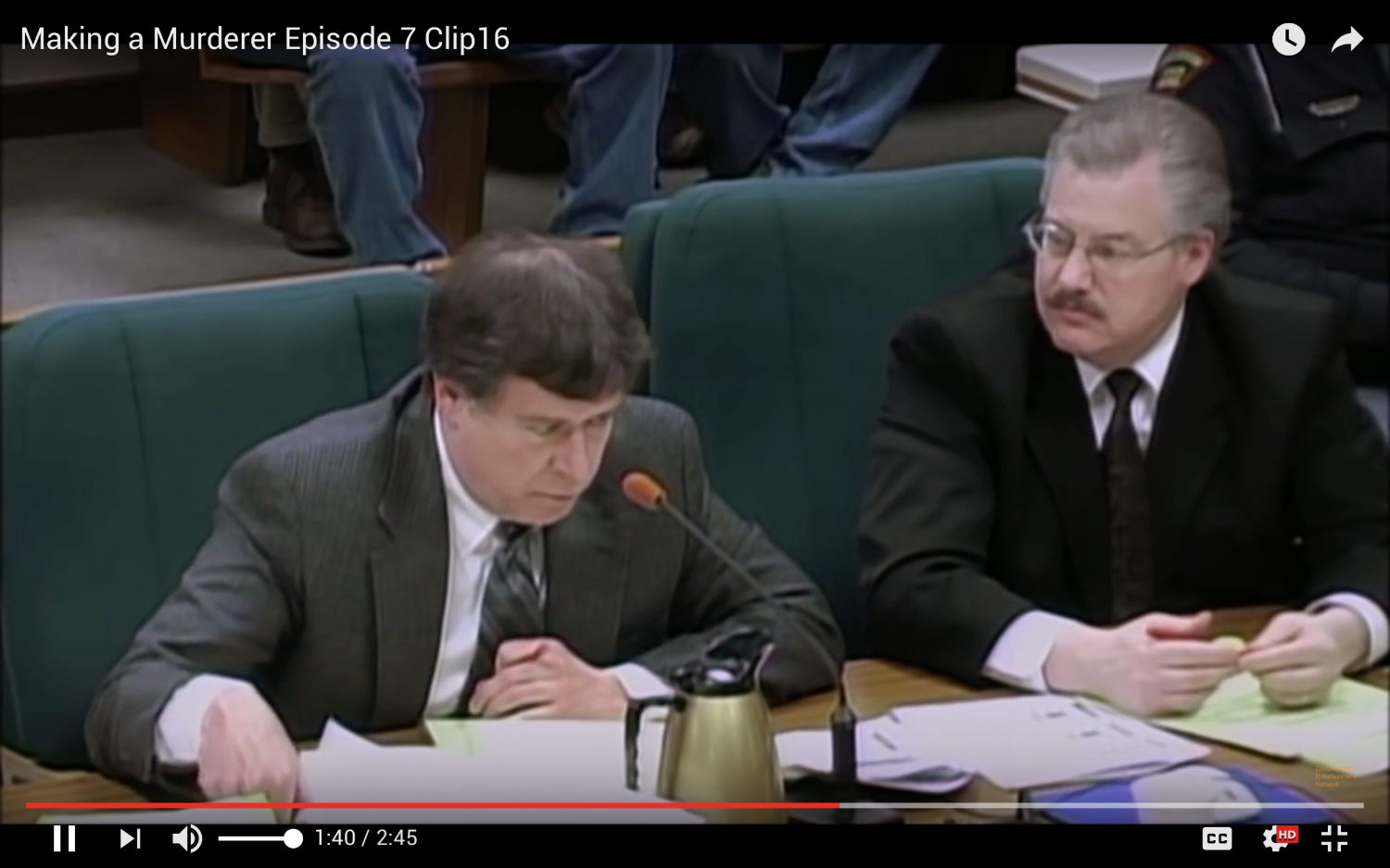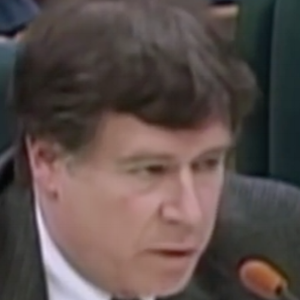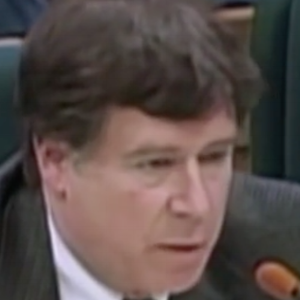MAM Body Language Analysis: FBI's LeBeau and Prosecutor Gahn
When I write, for both this blog and my general body language blog, my aim is to empower people to read and understand body language so that they can spot the same behaviours within their daily lives and present the best versions of themselves to others.
FBI's LeBeau and Prosecutor Gahn Disapprove of the Position they’re in
Part 1, Episode 7. Approximately 43 minutes into the episode, or 20 minutes in from the end.
New Evidence: Steven Avery’s blood planted in Teresa's vehicle
In Episode 7 new evidence comes to light. The defence finds reasonable evidence to believe that Steven's blood was taken from a vial of previously stored blood and planted in Teresa's vehicle. If tests conclude that EDTA, a preservative that keeps stored blood from spoiling, is present, this could provide scientific evidence that proves the blood was planted. Their hopes are soon quashed on finding that presently no laboratory carry out this kind of testing.
Despite this, the State somehow manages to get the FBI to run this test at short notice, concluding that it did not contain EDTA and therefore could not have come from the vial of blood. Dr Marc LeBeau (Chemistry Unit Chief, FBI) takes to the stand with his conclusion.
Misalignment Between Words and Body Language Hint Towards Deception
In this article, I want to highlight important nonverbal behaviours that raise red flags or show misalignment between LeBeau's words and behaviour during questioning by Norm Gahn (Special Prosecutor, Milwaukee County Assistant Attorney). Gahn himself shows a few behaviours that raise red flags.
Misalignment between words and behaviour is one of the most reliable indicators of deception. While we all can hide the truth with our words, none of us can conceal involuntary nonverbal behaviours that signal how we really feel.
Before we look at the words and behaviours, let me explain the meaning behind specific behaviours that are observed.
Body Language and Nonverbal Behaviour
A word of warning, some of the behaviours are barely detectable to an untrained eye. There are some microexpressions that we have omitted to mention because even to a trained eye they are hard to see. They flash over the face at a fraction of a second and unless you know which facial contractions to look for you won't see them.
Eye Block
I previously explained eye blocking in this article. In short, when faced with something we don't like we cover our eyes with our hands or our eyelids. It can be in response to a person, a topic or an object—picture someone receiving bad news or seeing something unsightly.
It's as though we are blocking out something disagreeable to us, something we've seen, heard or said. Eye blocking can increase when people are lying, however, it can't be taken as a lying behaviour in its own right, because we also do it when we tell the truth. It merely tells us that there is something disagreeable.
High Distress or 'The Not Face'
Tightly clenched lips with the mouth turned downwards usually indicate high distress. However, researchers have very recently discovered 'the not face', said to possibly be the eighth universal expression–innate and across all cultures. LeBeau's expression in the screenshot looks remarkably like the not face, especially in the lips, mouth and chin. The not face signals disapproval.
High Distress or The Not Face, Teamed with Eye Blocking
Microexpression of Contempt
I explained microexpressions and contempt in this article. In short, a microexpression is a fleeting facial expression that leaks our true emotion in just a fraction of a second. Contempt is a negative emotion/expression as it signals hatred, disdain or superiority. This expression looks like a semi-smile or smirk, where one side of the mouth pulls out to the side. LeBeau expresses this with the left side (right side, from your perspective) of his mouth.
Eyelid Flutter
The eyelid flutter is involuntary and signals discomfort or dislike. It can be triggered by stress and is usually seen when somebody says something that we strongly disagree with, in people struggling with thoughts or in finding the right words. We see this in people who stutter, which makes sense regarding its meaning of struggling to find the right words.
One-Sided Shoulder Shrug (Misalignment)
The one-sided shoulder shrug is a clear signal that the speaker is not confident in their own words. The shrug takes place as the words are spoken or at the end of the sentence. On the other hand, a full shoulder shrug (both shoulders) indicates the speaker is confident in their words. For example, saying, “I don’t know”, with a single shoulder shrug means there’s more to it and the speaker is potentially withholding information.
Saying the same line with a full shoulder shrug indicates the speaker really doesn’t know. It can be either subtle or pronounced. It's not a lying cue per se, it’s merely an indicator of lack of confidence in their spoken words.
Head Shake (Misalignment)
When we nod or shake our head in the opposite direction to what we are saying, take the nonverbal instead of the verbal as being the true expression. We can adapt our words to conceal the truth, but it's harder, or in some cases impossible (involuntary behaviours) to conceal behaviour.
That said, we do need to be careful when interpreting the head shake because in many cases it indicates disbelief. So while somebody may be saying something affirmative, they can at the same time be expressing disbelief at the bigger picture.
There is some evidence that the head shake is universal. It’s been observed in Bonobos, our closest relative, when communicating with their young. However, there are also some cultural differences with the head shake. In this context/culture it seems to be a misalignment. As an example, LeBeau states, "It's my opinion that..." At the same time, he shakes his head (very subtly). In other words, he disagrees with his own words.
LeBeau’s Statement and Body Language Analysis
Gahn
"Were you able to reach a conclusion concerning the presence of EDTA on the blood swabs that you tested from Teresa Halbuck's RAV 4 that were sent to you in this case?"
LeBeau
"Yes Sir. We were not able to identify any indication of the presence of EDTA in any of the swabs that were submitted to our laboratory and were reported to us as being collected from the RAV 4."
Note LeBeau's choice of words. In the second part of LeBeau's statement, he is avoiding answering Gahn's question directly. Is he altering his words to avoid telling a lie in court? He seems confident that EDTA was not present but then responds to the second part of the question with a switch in words. Consider two keywords: 'submitted' and 'reported'. This suggests that he doubts the source of the blood tested.
Add to this three nonverbal behaviours in one hit, on the word ‘RAV 4’–an extended eye block, the not face and a microexpression of contempt–dislike, disapproval & hatred. He's stuck in the middle. It seems like he's been put there by the prosecution but he appears to disagree with what he's had to do. He's trying to find the right words to avoid telling a lie.
Gahn
"Do you have an opinion to a reasonable degree of scientific certainty, whether the bloodstains from Teresa Halbuck's RAV 4 that you tested, came from the vial of blood of Steven Avery that was in the Manitowoc County Clerk of Court's office?"
LeBeau’s eyelids flutter, he’s struggling. Either his emotion or cognitive load has peaked.
LeBeau
"It's my opinion that–
LeBeau shakes his head, the behaviour misaligned with his words.
“the bloodstains that were collected from the RAV 4–
He shakes it again, again a misalignment between words and behaviour.
“could not have come from the EDTA–
LeBeau flashes a microexpression of contempt and one of his shoulders shrugs. He’s not confident in what he’s saying—this points towards deception.
“tube, um, that was provided to us in this case."
Consider his words teamed with the nonverbal behaviours. He shakes his head when mentioning, "collected from the RAV 4". Notice he says, "EDTA tube" with no mention of Steven Avery's blood. He shows contempt and indicates he isn't confident in his words (shrug), Then hesitates, "um", and continues with another key statement, "that was provided to us". Again, this could suggest his doubt in the samples provided to him?
At the end of this, LeBeau, sends a look of curiosity (eyebrows raised, head back), as if to say "Did you get what you wanted?" or to judge behavioural responses from the prosecution.
It seems that LeBeau has been put in a situation that he disapproves of. He’s scrambling to stay above the surface to say what he's supposed to say, without actually telling a lie. The question is, what kind of bullying or threats have put him in a position where he isn't prepared to speak the whole truth, in a matter with such a serious consequence?
LeBeau shows Curiosity as if asking for feedback.
Norm Gahn’s Body Language
Let's dig deeper and rewind a little to take a look at Norm Gahn's body language and see how he feels about the situation. Is he the bully or is he also being bullied? Some interesting behaviours allow us to see the bigger picture.
Rewind to where Gahn asks the first question that we looked at.
Gahn
"Were you able to reach a conclusion, concerning the presence of EDTA, on the blood swabs, that you tested from Teresa Halbuck's RAV 4 that were sent to you in this case?"
Gahn sits still—this is his baseline, his usual behaviour. A sudden significant deviation from it raises a red flag. With his fingers tightly interlocked in front of him, his stress and vulnerability are on show as he asks the question. It suddenly gets interesting.
Gahn’s head quickly nods sideways towards Kratz, (most likely a subconscious gesture), as he unlocks his fingers and moves his hand towards his glasses on the table. He immediately drops his head to conceal a fleeting glance towards Kratz—we look to our superiors, real or perceived, to judge their response.
Possibly a blocking behaviour, Gahn puts on his glasses—we block with our body or objects when we’re not comfortable with something. Is it a blocking behaviour or does he really need to improve his visibility suddenly? All of this happened within just two seconds.
This sudden abundance of behaviours shows Gahn is uncomfortable and aware of close surveillance from Kratz. I have to question why, at this particular point in the question?:
"Teresa Halbuck's RAV 4, that were sent to you in this case?"
This is the same part of the question that LeBeau is also uncomfortable with.
The images below capture Gahn's concealed fleeting glance towards Kratz, he then looks back towards LeBeau and sustains eye contact. They occur at a fraction of a second. Meanwhile, Kratz closely observes Gahn's every move.
Let's rewind even more because there's another fleeting glance from Gahn towards Kratz. Let's see what he was saying at that moment:
"…an allegation of law enforcement officers planting evidence"
And another, this time it's a double glance, in response to LeBeau's words, funnily enough on the same topic of planting:
"The notion that blood was planted from an EDTA tube"
LeBeau and Gahn, if you're reading this, it's evident that you were under pressure to 'perform' your part in the charade and you were clearly uncomfortable with the command. Why? What threat or bribe had put you there? Is it time to step up and speak the truth?







